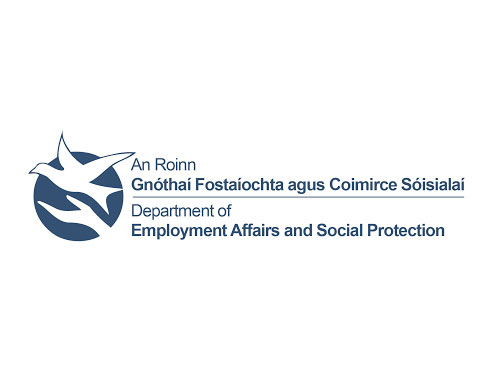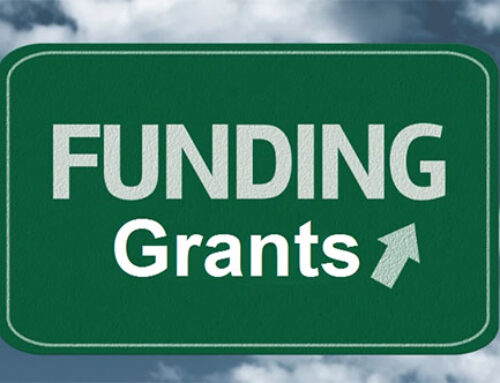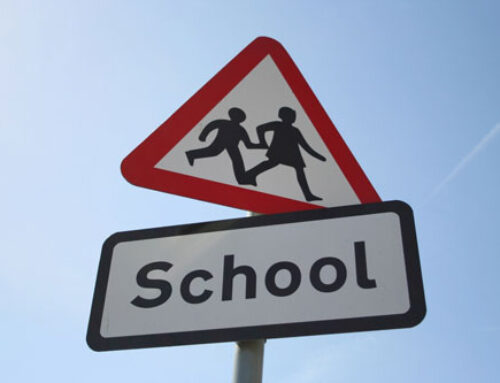As part of a continuing information campaign, I am highlighting the various entitlements and benefits.
Today I am focusing on child benefit and again I am indebted to the Citizens Information for the detail below.
CHILD BENEFIT
Child Benefit is a monthly payment to the parents or guardians of children under 16 years of age. It is paid for children under 18 years of age if they are in full-time education, full-time training or have a disability and cannot support themselves. Child Benefit is not paid for any child dependant aged 18 or older, even if they stay in education or training.
For twins, Child Benefit is paid at one and a half times the normal monthly rate for each child. For triplets and other multiple births, Child Benefit is paid at double the normal monthly rate for each child.
Child Benefit is not taxable.
BREXIT AND CHILD BENEFIT
After Brexit, you will continue to get your Child Benefit as before, for example:
If you work in the UK and live in Ireland. You will continue to get your UK Child Benefit payment and Irish Child Benefit supplement.
If you work in Ireland and live in the UK. You will continue to get your Irish Child Benefit payment.
If you work and live in Ireland with your children and your partner works in the UK, you should apply for Child Benefit in Ireland.
Rules
You should apply for Child Benefit within 12 months of:
The birth of your baby or
The month the child became a member of your family or
The month your family came to live in Ireland or
The date you started working in Ireland if your child(ren) are living in another EU country
To qualify for Child Benefit, you must satisfy the Habitual Residence Condition. If you are an EU/EEA citizen working in Ireland, you satisfy the condition. You can read more about Child Benefit and EU regulations below.
Birth of your baby
If your baby is born in Ireland, when you register the birth of your baby the Department of Employment Affairs and Social Protection (DEASP) will begin a Child Benefit claim for your child and send you a partially completed claim form for your signature and payment details.
If you are already claiming Child Benefit for another child, your new baby is added to your Child Benefit claim and payment begins automatically from the month after the birth. You will be sent a letter confirming payment.
In both cases, your new baby will be given a Personal Public Service (PPS) number.
If your child is not born in Ireland, or their birth is not registered within the required time (3 months), you must fill in Child Benefit (form CB1) (pdf) and send it to the Child Benefit Section. See ‘How to apply’ below for more information.
Children aged 16 and 17
If you want to keep your Child Benefit for a child with a disability or a child in full-time education or training, you will need to fill in Child Benefit (form CB2) (pdf) one month before your child’s 16th birthday – see ‘How to apply’ below. This form must also be signed and officially stamped by:
The school or college if your child is in full-time education
The training organisation if your child is in full-time training
A doctor if your child has a disability and is unable to support him or herself
If your child is aged 16 or 17 and you are getting Child Benefit for him or her, you must notify the DEASP immediately if your child leaves school/college/training course before the certified date.
Similarly, if your child has a disability and is able to support him or herself before reaching 18 or the date originally certified by the doctor, you must inform the DEASP.
If this is your first time claiming Child Benefit or you have started to care for older children, you should make a claim by submitting both application forms, CB1 and CB2 – see ‘How to apply’ below.
Full-time education (aged 16 and 17)
If your child is 16 or 17 years of age and in full-time education, you will get Child Benefit until June. You will not get another payment until your child returns to full-time education in September. The Child Benefit section will send you an application form in August to complete and return when your child returns to full-time education in September. When you get your payment, it will include any arrears due to you, including Child Benefit for July and August. If your child turns 18 during the summer, you will get any arrears due up until the month they turn 18 – provided they return to education in September.
If you don’t get a form in the post from the Child Benefit section, fill in form CB2 in September – see ‘How to apply’ below.
Changes in circumstances
You must notify the DEASP in writing of any changes in circumstances which may affect your Child Benefit claim. For example:
Change of address
Child is no longer with you or in your care
Change of post office or other financial institution
Child aged 16 or 17 leaves full-time education
You or your child(ren) leave the State
You or your spouse, civil partner or cohabitant start work in another country
You can use Form CB56 (pdf) to notify the DEASP of any changes to your circumstances.
Change of claimant
If you start to care for a child under 16, you should make a new claim for Child Benefit by completing the CB1 form. If the child is 16 or over, you need to complete both CB1 and CB2 forms – see ‘How to apply’ below.
Child Benefit and EU Regulations
EU/EEA citizens and Swiss nationals working in Ireland satisfy the habitual residence condition for Child Benefit. This is also the case if the worker becomes unemployed and gets Jobseeker’s Benefit.
If you are an EU/EEA citizen or a Swiss national and work in a country covered by EU Regulations, the country you work in usually pays Child Benefit even if your family is living in another country. However, if your children are living in another EU/EEA country you should still apply for any Family Benefits you are entitled to there.
If your child(ren) are living in another EU country, you should apply within 12 months of the date that you, your spouse, civil partner or cohabitant started working in Ireland.
You can find out more about Family Benefits and EU Regulations in Part 9 of the EU Guidelines on the DEASP’s website. You can also contact the Child Benefit Section for more information on how EU rules affect Child Benefit – see ‘Where to apply’ below.
Non-EU/EEA citizens
Non-EU/EEA citizens must be habitually resident in Ireland to quality for Child Benefit. If you are a non-EU/EEA citizen and legally working in this State, you may qualify for Child Benefit if your child is also resident here or in another EU state. More information is available in our document on habitual residence.
Fraudulent claims for Child Benefit
Penalties for false or misleading statements made to obtain Child Benefit for you, or for any other person, include prosecution leading to a fine, a prison term, or both.
Rates
Child Benefit is €140 per month for each child (paid on the first Tuesday of every month). If you are getting Child Benefit for the first time it will be paid at the start of the month following the birth of the child. It is paid for the month your child turns 18.
Child Benefit in 2019
Family size Monthly rate, €
One child 140
Two children 280
Three children 420
Four children 560
Five children 700
Six children 840
Seven children 980
Eight children 1,120
Child Benefit is a universal payment. However, you can decide not to make a claim for a new baby or to opt out of getting payments for existing children. To do this, you write to the Child Benefit Section – see ‘Where to apply’ below.
Multiple births
If you have twins, you get one and a half times the normal monthly rate for each child. For triplets and other multiple births, Child Benefit is paid at double the normal monthly rate for each child, provided at least three of the children remain qualified.
How to apply
Child under 16 years of age
If your baby is born in Ireland and you are not claiming for any other children, the Child Benefit Section will create a new claim and send you a partially completed claim form CB1 (pdf) for your signature and payment details. This form also includes information on how to claim for your new baby online. To apply online, you must have a Public Services Card and a verified MyGovID account. The baby is also given a Personal Public Service (PPS) number.
(Please note that you can only claim online if you are invited to do so by the Department.)
If you are already getting Child Benefit, your new baby is added to your Child Benefit claim and payment begins automatically from the month after the birth. The Department will send you a letter confirming your payment.
If your child is not born in Ireland, or their birth is not registered within the required time (3 months), you must fill in Child Benefit (form CB1) (pdf). You must send this form (CB1) to the Child Benefit Section – see ‘Where to apply’ below.
Children aged 16 and 17
To get Child Benefit for a child aged 16 or 17, fill in Child Benefit (form CB2) (pdf). If you are already getting Child Benefit for this child, the Child Benefit section will send you a partially completed application form to confirm that your child is still in full-time education or training, or has a disability and cannot support themselves. Send your form to the Child Benefit Section – see ‘Where to apply’ below.
If this is your first time claiming Child Benefit or you have become a claimant adult in respect of the child(ren), you should make a claim by submitting both application forms, CB1 and CB2.
If you have any difficulty filling in these forms, staff in your Intreo Centre or Social Welfare Branch Office will help you. You can also visit your local Citizens Information Centre for advice and help with form filling.
Where to apply
Child Benefit Section
Department of Employment Affairs and Social Protection
Social Welfare Services Office
St Oliver Plunkett Road
Letterkenny
Co. Donegal
F92 T449
Opening Hours: You can only contact this office by email or telephone.
Tel: (074) 916 4496 (If calling from outside Ireland please call + 353 74 916 4496)
Locall: 1890 400 400 (Note: the rates charged for using 1890 (Lo-call) numbers may vary)
Homepage: http://www.welfare.ie
You can contact the Child Benefit Section using the secure general enquiry form.





